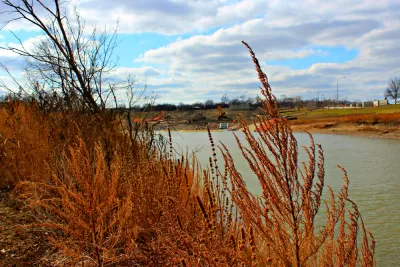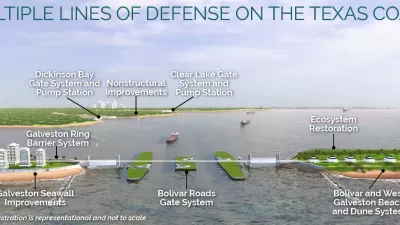A $2.75 billion plan to build a channel for flood waters around Fargo, North Dakota is described as one of the most ambitious infrastructure projects in the country.

"It's one of the biggest and most ambitious infrastructure projects in America right now: a $2.75 billion plan to build a new channel to divert flood waters from the Red River for 30 miles around Fargo, N.D., in order to save the area from future floods," reports Daniel C. Vock.
The Red River diversion project requires the cooperation of local officials, state authorities from North Dakota and Minnesota, and the U.S. Army Corps of Engineers. The state of Minnesota finally cleared the way for the project recently after a two-year standoff, and now it's up to North Dakota state legislators to fund the remainder of the project's cost.
As for the unprecedented involvement of the private sector on the project, Vock provides the following information:
A specially created local government entity, called the Diversion Authority, would then be primarily responsible for building the channel between the reservoir and a point downstream on the Red River from Fargo. The diversion agency, though, plans to hire a private consortium to build the 30-mile channel and maintain it for 30 years. It already has three contracting groups that have indicated they would be interested in undertaking the project.
The article also lists several desired benefits of the P3 arrangement.
FULL STORY: North Dakota's Massive Effort to Avoid Floods

Alabama: Trump Terminates Settlements for Black Communities Harmed By Raw Sewage
Trump deemed the landmark civil rights agreement “illegal DEI and environmental justice policy.”

Planetizen Federal Action Tracker
A weekly monitor of how Trump’s orders and actions are impacting planners and planning in America.

The 120 Year Old Tiny Home Villages That Sheltered San Francisco’s Earthquake Refugees
More than a century ago, San Francisco mobilized to house thousands of residents displaced by the 1906 earthquake. Could their strategy offer a model for the present?

In Both Crashes and Crime, Public Transportation is Far Safer than Driving
Contrary to popular assumptions, public transportation has far lower crash and crime rates than automobile travel. For safer communities, improve and encourage transit travel.

Report: Zoning Reforms Should Complement Nashville’s Ambitious Transit Plan
Without reform, restrictive zoning codes will limit the impact of the city’s planned transit expansion and could exclude some of the residents who depend on transit the most.

Judge Orders Release of Frozen IRA, IIJA Funding
The decision is a victory for environmental groups who charged that freezing funds for critical infrastructure and disaster response programs caused “real and irreparable harm” to communities.
Urban Design for Planners 1: Software Tools
This six-course series explores essential urban design concepts using open source software and equips planners with the tools they need to participate fully in the urban design process.
Planning for Universal Design
Learn the tools for implementing Universal Design in planning regulations.
Clanton & Associates, Inc.
Jessamine County Fiscal Court
Institute for Housing and Urban Development Studies (IHS)
City of Grandview
Harvard GSD Executive Education
Toledo-Lucas County Plan Commissions
Salt Lake City
NYU Wagner Graduate School of Public Service





























